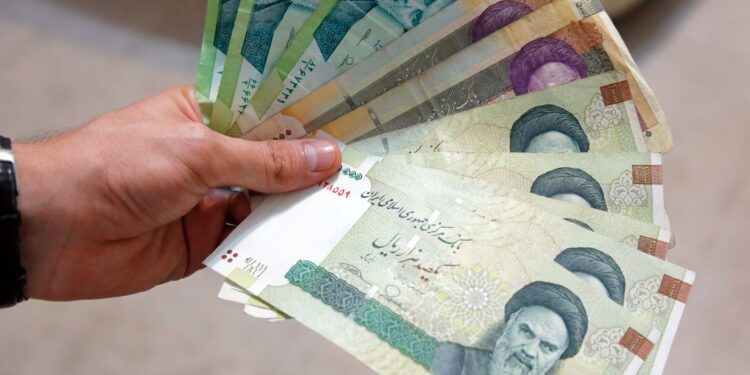Tehran- The designation of years in Iran has turned into an annual tradition that reflects its strategic priorities and directs its general policies. In recent years, the focus on economic issues has been in light of the internal and external challenges facing the country.
In this context, the slogan “Investing for Production” for the new Iranian year by Supreme Leader Ali Khamenei came to stress the importance of stimulating investment as a major tool to advance production and enhance economic growth.
Public policies
Iran faces economic challenges, including international sanctions that affect its ability to attract foreign investment, while the government is working to expand cooperation with countries such as China and Russia, as well as implementing measures to support local investments in order to enhance national production.
Official data indicate a decrease in the inflation rate from 55.7% to 35.4%, which reflects a relative improvement in some economic indicators, however, analysts believe that the continued challenges related to financing and bureaucracy may affect investor confidence, which calls for more reforms to create a more stable business environment.
The government seeks to improve the investment environment by facilitating legal measures and providing incentives for investors, within the framework of a strategy to enhance economic growth, and experts note that the continued economic reforms will contribute to supporting financial stability and stimulating the productive sectors, which can help achieve more sustainable economic growth.
In light of these efforts, Iran continues to work to achieve a balance between internal challenges and external factors, with a focus on supporting the productive sectors and improving the investment climate to ensure long -term economic stability.
In his speech on the occasion of Nayrouz and the beginning of the new Iranian year 1404, the Supreme Leader Khamenei indicated that last year witnessed great challenges, but he stressed that overcoming economic obstacles is possible by focusing on investment and production, and stressed the role of government institutions and the private sector in achieving this goal, calling for practical measures to support this trend.
Local investment
In this context, economics professor Isaac Saidian explained that Ayatollah Khamenei has defined the slogan of the year based on the need for local production to rely on internal investments, but he pointed out that the tightening of the sanctions imposed on Iran impedes investment within the country and limits its trade with the outside world.
Saidian added in an interview with Al -Jazeera Net that, given the volume of its large trade exchange with the United States, it will not sacrifice its long -term economic interests for investment or trade with Iran, and Russia, which is fighting a war with Ukraine and living under severe sanctions, cannot be considered a reliable investment partner under these circumstances.
Saidian stressed that the main challenge facing this vision is the high rate of inflation in Iran, which makes local investors hesitant to pump their money in production.
He pointed out that Iran suffers from major structural imbalances in vital sectors such as gas and electricity, which are necessary for any industrial production, which requires the treatment of these problems before thinking about productive expansion.
Saidian pointed out that most investors preferred to transfer their capital abroad or direct them towards parallel markets within Iran instead of investing in production, and even if the government provides banking facilities and loans, the liquidity crisis and the budget deficit in banks make it difficult to achieve this.
He added that even if investors get loans, they are likely to take advantage of them in other more profitable markets instead of risking them in the production sector, which is severely affected by inflation and other economic challenges.
https://www.youtube.com/watch?v=g1W6ed7zl6i
Self -sufficiency
On the other hand, the expert in international affairs, Ashkan Mibbini, said that the choice of the slogan “Investing for Production” by the leader for the new year carries important messages and goals that can be analyzed in light of the country’s internal and international conditions.
In his speech to Al -Jazeera Net, he added that the leader of the Iranian revolution has always emphasized the resistance economy as a strategy to reduce dependence on abroad and enhance the country’s ability to withstand economically, as investment in production is an essential factor in reducing dependence on imports, increasing national production, and creating job opportunities.
Mibbini stressed that in light of the continued sanctions and economic pressures, this approach can push the country towards more self -sufficiency.
He said that this policy reflects the focus on production, economic independence, and social justice, as well as the need for officials to provide the appropriate environment to facilitate investment and enhance the role of the private sector.
Mibbini added that it can be concluded that the slogan “Investing for Production” highlights the priority of sustainable growth, reducing unemployment rates, raising the level of the welfare of the people, and confronting the sanctions, noting that through this long -term and future vision, Iran can turn towards a strong, flexible, and independent economy.
Official indicators
It is worth noting that the Governor of the Iranian Central Bank, Mohammad Reza Farzin, presented a report on the economic situation during the last nine months of 2024, as it showed an improvement in several main indicators:
- Economic growth and investment: The economy recorded a growth of 3.7%, and the formation of fixed capital increased by 3.4%, which reflects the increase in investment.
- Non -oil trade: It increased by 11.2%, exceeding $ 116 billion, indicating the improvement of trade relations.
- InflationThe inflation rate decreased from 55.7% to 35.4%, indicating improvement in prices.
- Cash liquidityLiquidity growth slowed to 27.6%, which may help in stabilizing the economy.
- Credit policiesThe central bank plans to support production and small and medium enterprises through new financing mechanisms.
- Production costsDecreased inflation in the production sector, which indicates the improvement of the conditions of producers.



